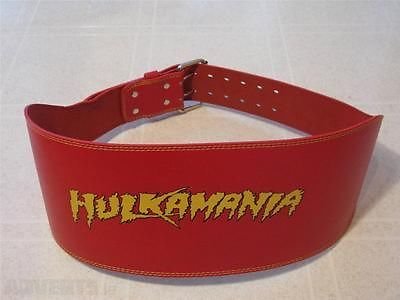Low back braces (or supports) are a pretty hot topic here at SpineCare when dealing with lumbar pain and injuries. There are plenty of misconceptions, so I would like to give you some pros and cons of using a back brace for low back pain.
Before we start, I want to stress the importance of being examined by a trained professional before using one for a back injury or chronic pain. An accurate diagnosis on why you’re having pain will save you a lot of time (and grief) by getting the right treatment from the start.
The Good
When people think of back supports, I’m sure the Hulk Hogan gym belt comes to mind. Luckily, over time they have become much more sophisticated. Customized braces ranging from being lightly supportive to being completely immobilizing are easily found at most stores. Some of the benefits that back braces may provide include:
- Less stress and pressure on the spine during forceful exertions of the back
- Helping to maintain better posture while bending and lifting
- Increased spinal support by stiffening the spine
- Restricting twisting and bending movements (range of motion), which may prevent further injury

So when is it good to wear a back brace? Usually, one of these reasons:
- After low back surgery. The use of a back support will offer spine stabilization that may aid in healing.
- After an acute (new) low back injury. This allows stress to be taken off the spine, helping the injury heal quicker.
- During activities that require intense physical demands on the low back.
Note that all of these are temporary uses of back braces. Think of using them only ‘as needed’. For example, when you need extra back support while doing a lot of bending or lifting at home or work. If you’re using them to help aid healing after a surgery or injury, wearing the brace should become less as pain levels decrease.
The Bad
Let’s look at some of the bad uses of back supports.
One of the biggest no-nos I see with using a back brace is the false sense of security they tend to give. It’s very common to see people do activities they wouldn’t normally do, like lifting extremely heavy objects, that ends in disaster. There’s a simple rule: if you can’t do it without the brace, don’t do it with the brace. Just because you have extra support doesn’t mean it’s going to turn you into Schwarzenegger.
Another issue is that while wearing a brace lowers the demand on the low back, it tends to place it on other nearby areas. By doing this, the possibility of new pains and injuries increases. I’ve seen plenty of patients get new pains in the mid-back, hips, legs, and knees.
Like taking pain medication ‘as needed’ for pain, back braces can be easily overused. The biggest concern I stress to patients is that braces should not used as a crutch, because you’ll easily become dependent on them. Once you go down that route, new problems start to rear their ugly head.
The Ugly
By using back braces more and more, and using muscles of the back less, they will weaken over time. Think ‘use it or lose it’. The body will start to depend on the support given by the brace, and decrease the natural strength and stability of the low back. This may, in turn, cause you to fatigue more quickly and resort to bad posture. The end result is the spine being put at higher risk of future injury than it would have been had the brace not been used.
Probably the most concerning thing I see is using braces as a replacement for getting treatment. Even more so for serious issues like lumbar disc bulges and severe degenerative disc disease. Simply put, braces should never be used as a substitute for treatment. In fact, by prolonging getting care, you could be setting yourself up for a constantly worsening condition that could end up needing something as risky as back surgery.
The Bottom Line
The use of a back brace can be very beneficial over short periods of time. But using a brace long-term or for preventative reasons may actually work against you, and land you in a situation that you were trying to avoid. When using a brace, wear it only when you need it and not all the time. If you’re suffering from chronic pain, or a have a significant low back injury, do not prolong seeking treatment because the brace is making the pain tolerable.
St. Joseph, MI Chiropractic Center — Dr. Michael Rowe
Interested in getting more health tips and info? Like us on Facebook or Twitter to get our latest blog postings.
Did you like this post? If so, click the Facebook button below to share it with your friends!
